Abstract
This study shows that the continuing presence of activity similar to normal sleep in the EEG in conjunction with the EEG polygraph (EEGP) can be used to determine the severity of brain damage after head injury. Recordings were taken within seven days of head injury from 154 unselected patients after resuscitation and emergency surgery. Sixteen patients with ongoing seizures were excluded. In the remaining 138 patients the presence of activity in the EEG, EEGP, or both, which can also be recognised in normal alertness and sleep, was noted. Particular attention was paid to the presence or absence of arousal related phasic activity involving EEG, motor, and autonomic changes. The traces were allocated to one of five groups: group 1, wakeful traces with normal alpha in at least one hemisphere; group 2, sleep-like traces with K complexes responsive to stimulation; group 3, traces with phasic activity related to abnormal spontaneous arousal including EEG changes; group 4, traces with abnormal spontaneous arousal activity without EEG changes; group 5, traces with no spontaneous arousal activity. The mean follow up was 21.5 months. Groups 2 and 3 were significantly associated with a good outcome and group 5 with death or a vegetative state. Comparison between the EEG/EEGP findings and the Glasgow coma scale at the time of the recording showed the EEG/EEGP to be the better predictor of outcome, particularly for individual patients.
Full text
PDF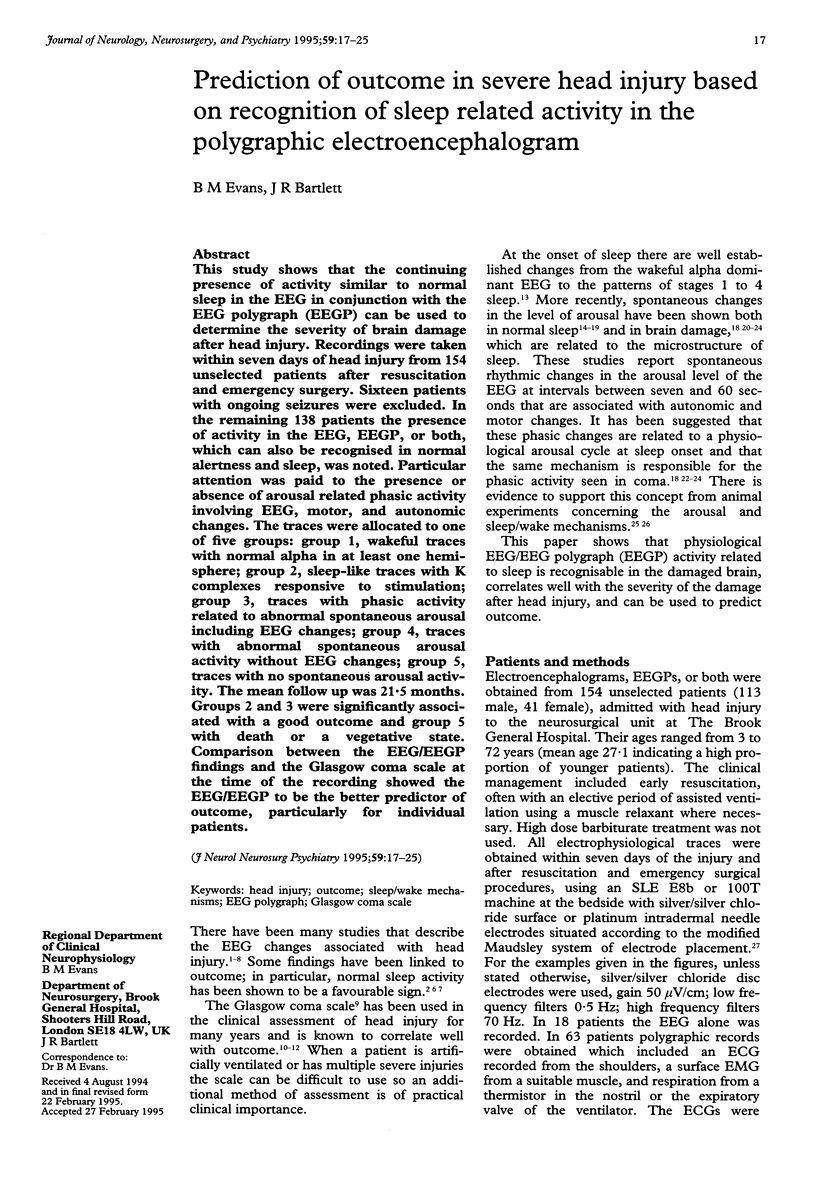
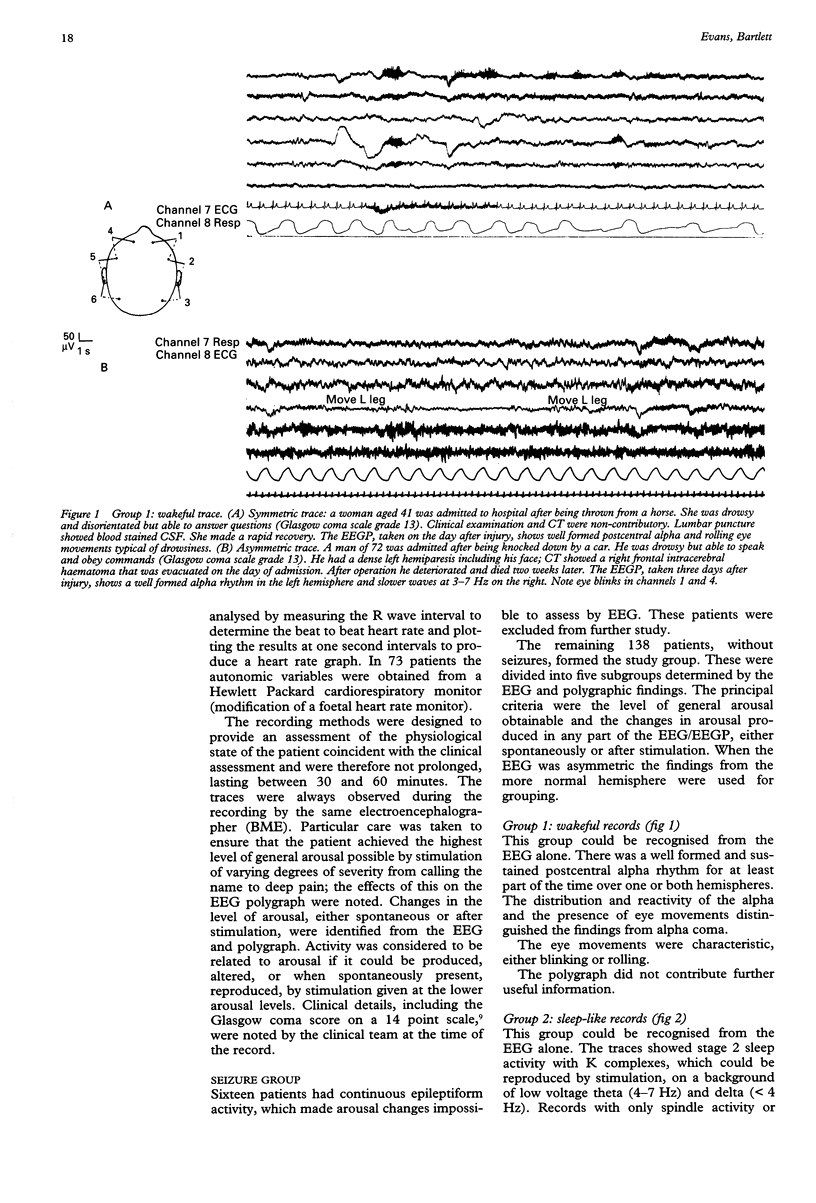
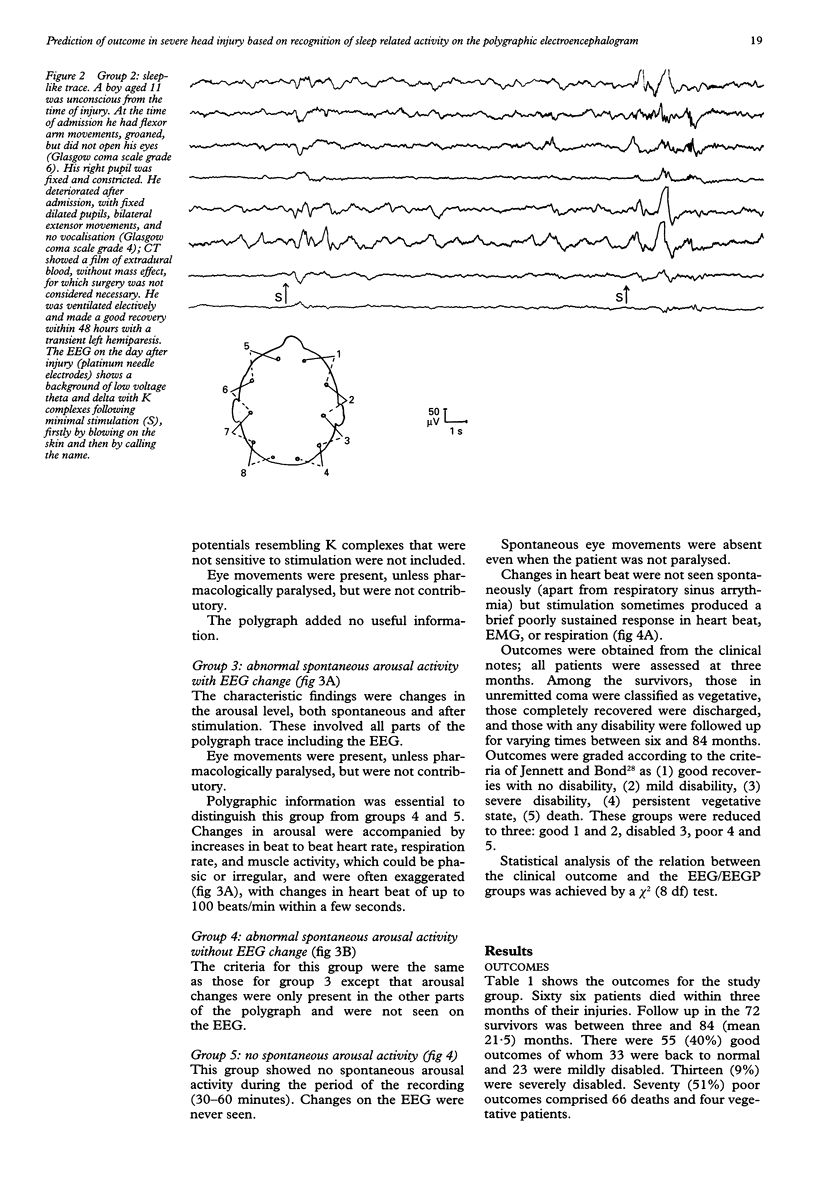
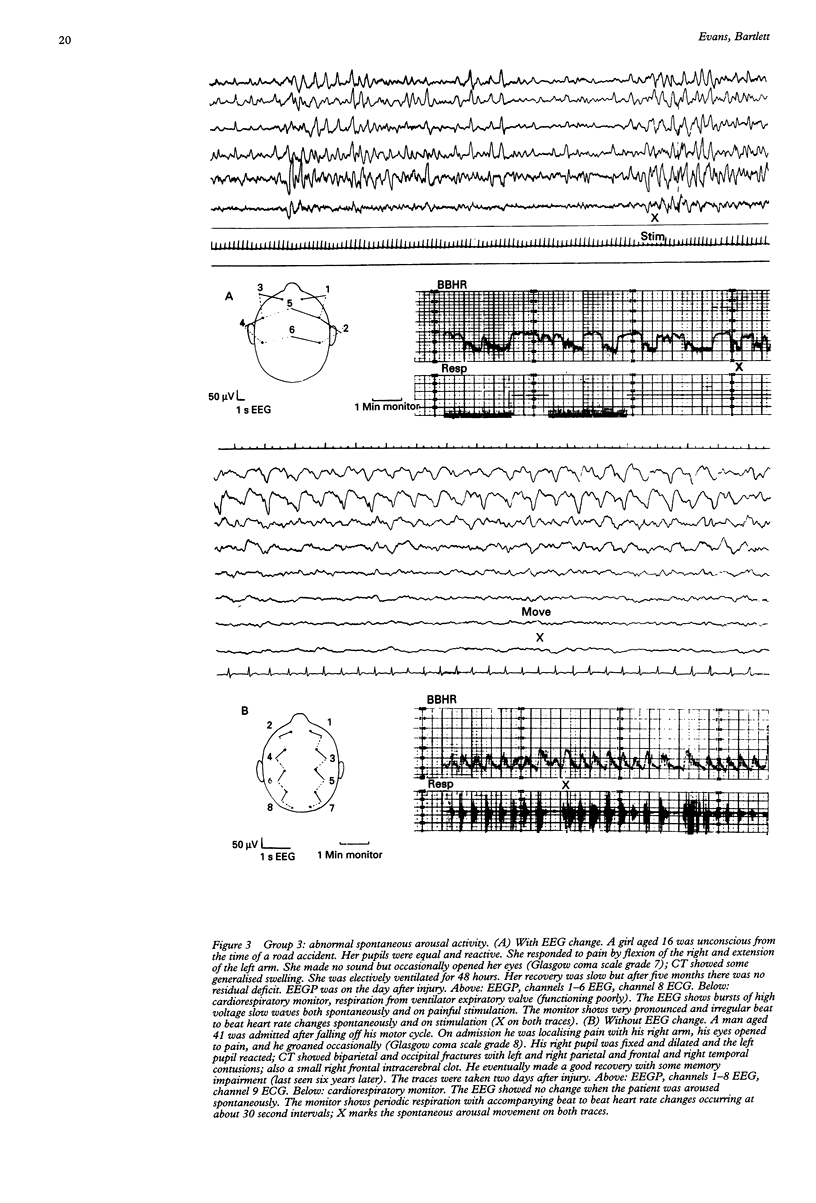
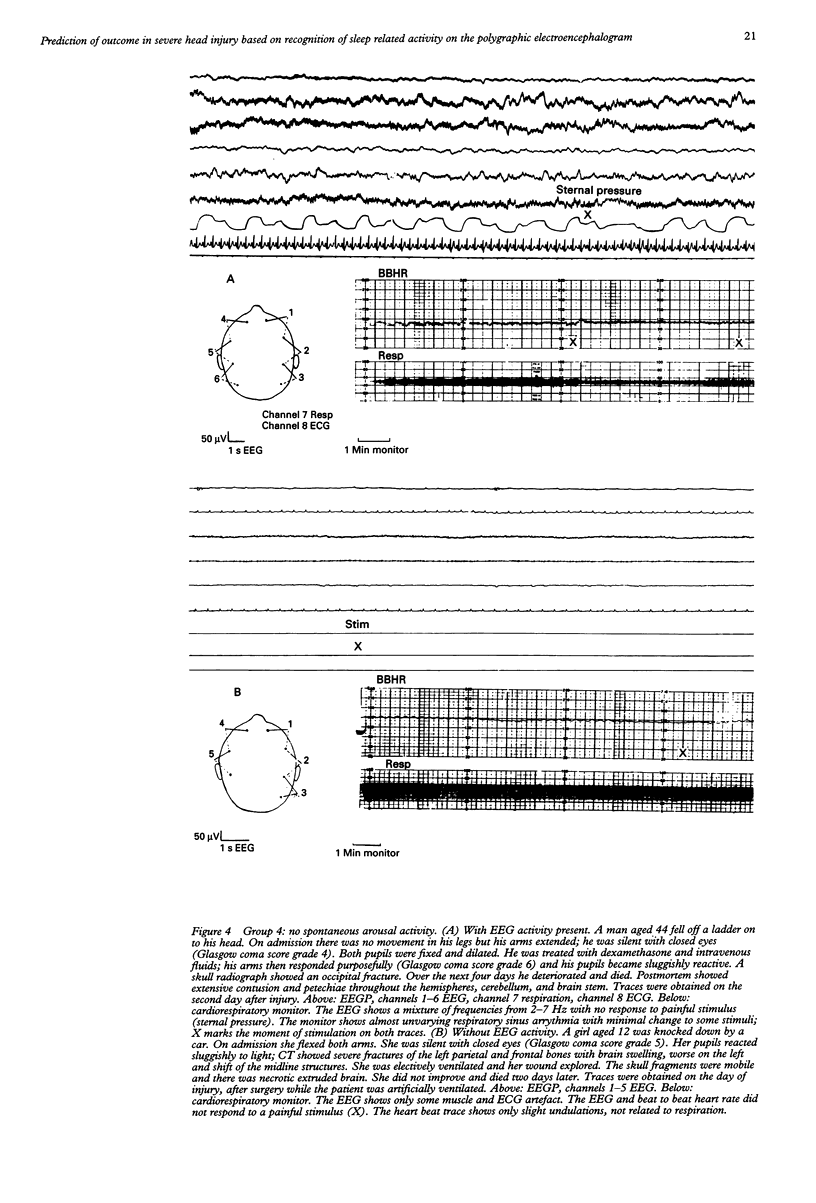
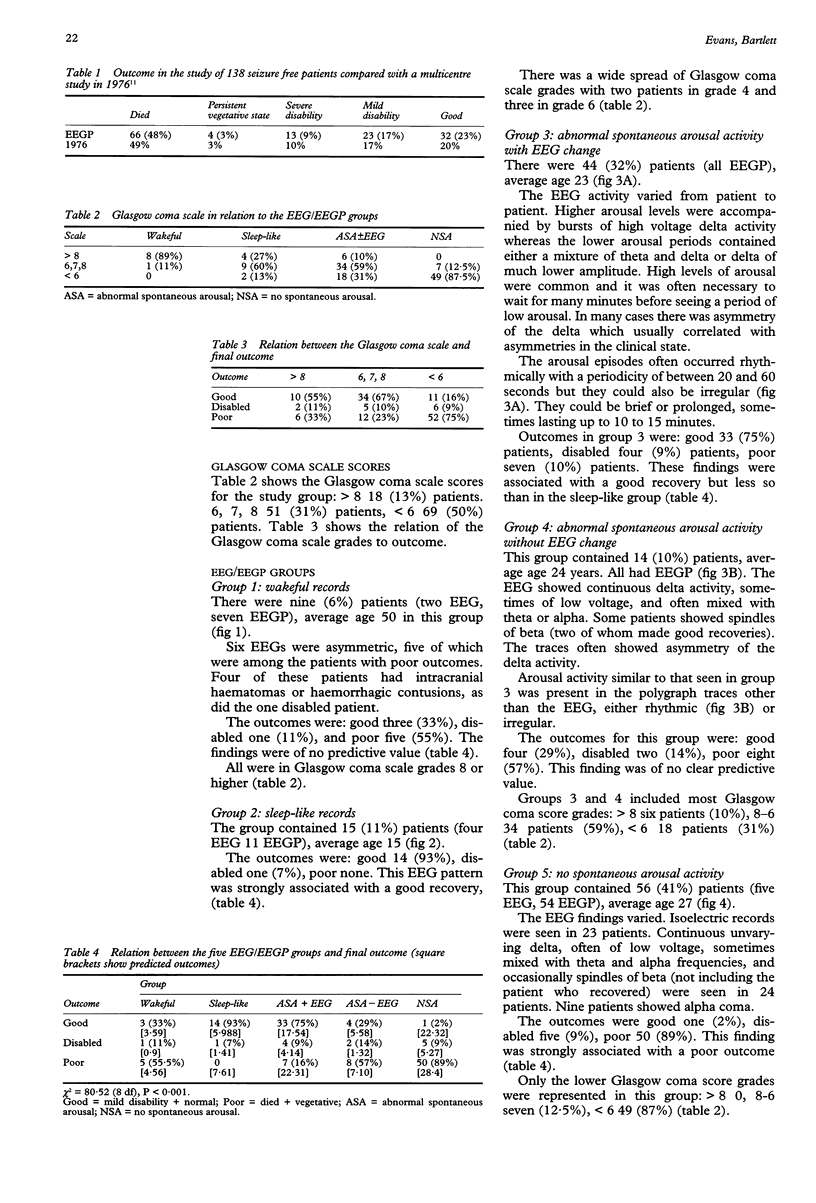
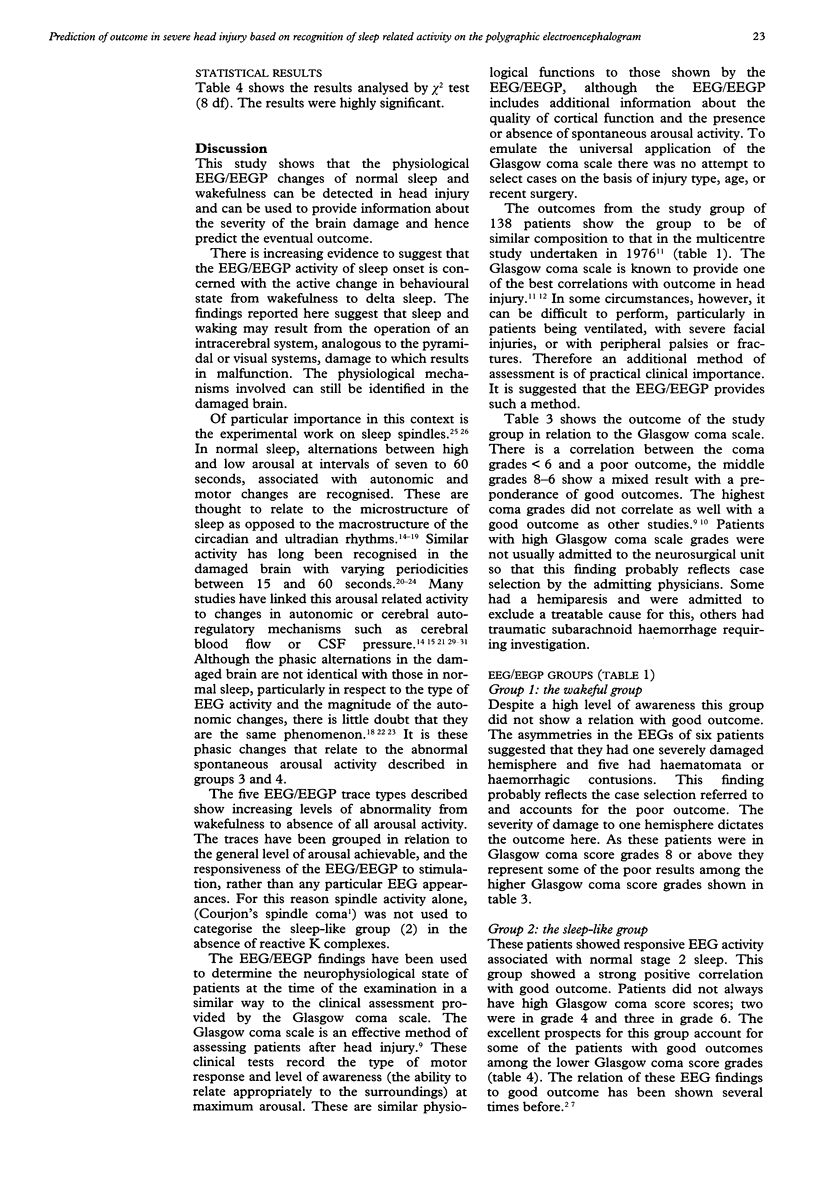
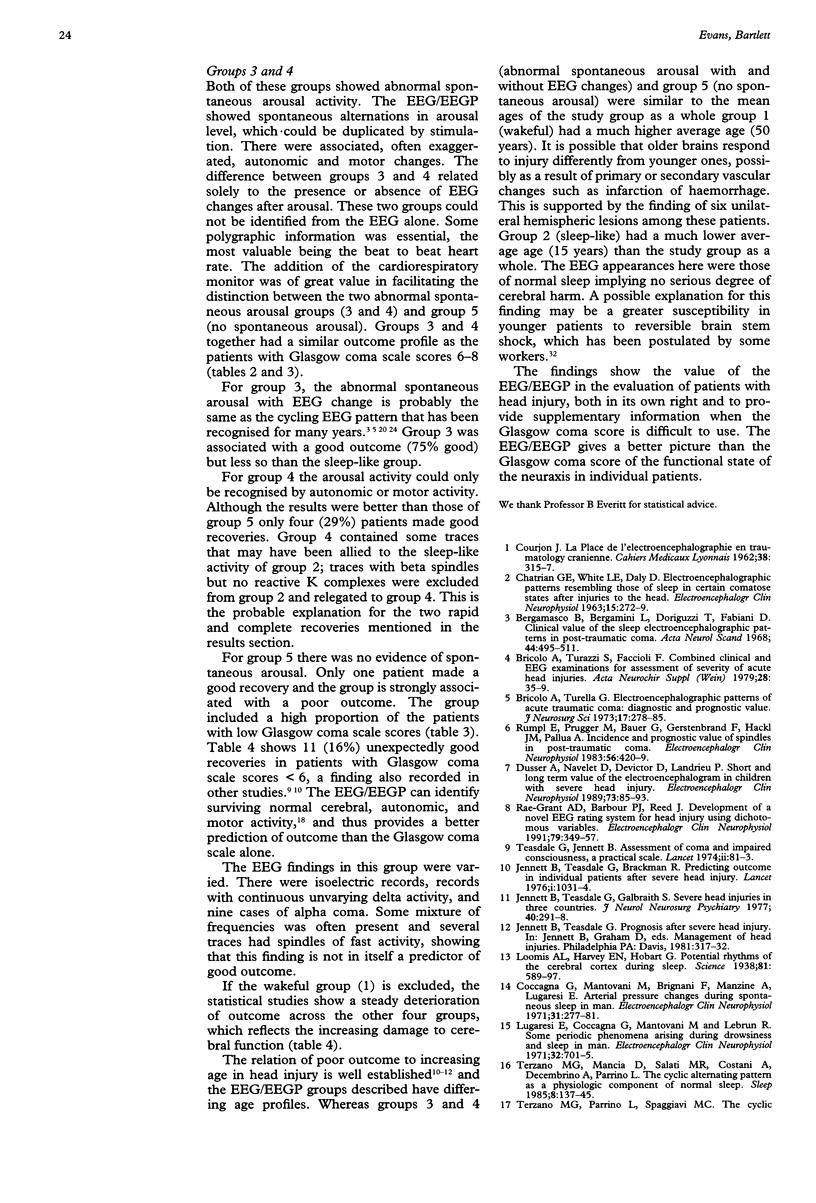
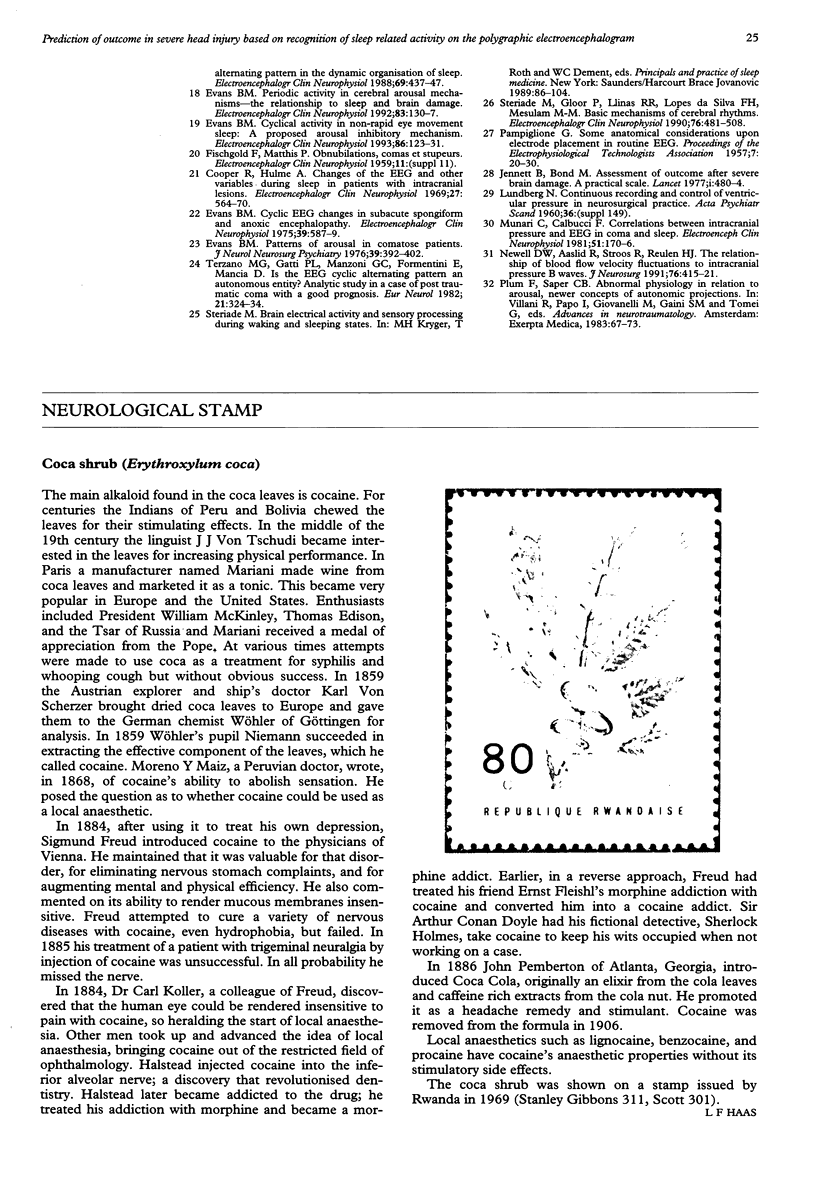
Images in this article
Selected References
These references are in PubMed. This may not be the complete list of references from this article.
- Bergamasco B., Bergamini L., Doriguzzi T. Clinical value of the sleep electroencephalographic patterns in post-traumatic coma. Acta Neurol Scand. 1968;44(4):495–511. doi: 10.1111/j.1600-0404.1968.tb05588.x. [DOI] [PubMed] [Google Scholar]
- Bricolo A., Turazzi S., Faccioli F. Combined clinical and EEG examinations for assessment of severity of acute head injuries. Acta Neurochir Suppl (Wien) 1979;28(1):35–39. doi: 10.1007/978-3-7091-4088-8_6. [DOI] [PubMed] [Google Scholar]
- CHATRIAN G. E., WHITE L. E., Jr, DALY D. Electroencephalographic patterns resembling those of sleep in certain comatose states after injuries to the head. Electroencephalogr Clin Neurophysiol. 1963 Apr;15:272–280. doi: 10.1016/0013-4694(63)90096-8. [DOI] [PubMed] [Google Scholar]
- Coccagna G., Mantovani M., Brignani F., Manzini A., Lugaresi E. Laboratory note. Arterial pressure changes during spontaneous sleep in man. Electroencephalogr Clin Neurophysiol. 1971 Sep;31(3):277–281. doi: 10.1016/0013-4694(71)90098-8. [DOI] [PubMed] [Google Scholar]
- Dusser A., Navelet Y., Devictor D., Landrieu P. Short- and long-term prognostic value of the electroencephalogram in children with severe head injury. Electroencephalogr Clin Neurophysiol. 1989 Aug;73(2):85–93. doi: 10.1016/0013-4694(89)90187-9. [DOI] [PubMed] [Google Scholar]
- Evans B. M. Cyclic EEG changes in subacute spongiform and anoxic encephalopathy. Electroencephalogr Clin Neurophysiol. 1975 Dec;39(6):587–598. doi: 10.1016/0013-4694(75)90071-1. [DOI] [PubMed] [Google Scholar]
- Evans B. M. Cyclical activity in non-rapid eye movement sleep: a proposed arousal inhibitory mechanism. Electroencephalogr Clin Neurophysiol. 1993 Feb;86(2):123–131. doi: 10.1016/0013-4694(93)90084-9. [DOI] [PubMed] [Google Scholar]
- Evans B. M. Patterns of arousal in comatose patients. J Neurol Neurosurg Psychiatry. 1976 Apr;39(4):392–402. doi: 10.1136/jnnp.39.4.392. [DOI] [PMC free article] [PubMed] [Google Scholar]
- Evans B. M. Periodic activity in cerebral arousal mechanisms--the relationship to sleep and brain damage. Electroencephalogr Clin Neurophysiol. 1992 Aug;83(2):130–137. doi: 10.1016/0013-4694(92)90026-e. [DOI] [PubMed] [Google Scholar]
- Jennett B., Teasdale G., Braakman R., Minderhoud J., Knill-Jones R. Predicting outcome in individual patients after severe head injury. Lancet. 1976 May 15;1(7968):1031–1034. doi: 10.1016/s0140-6736(76)92215-7. [DOI] [PubMed] [Google Scholar]
- Jennett B., Teasdale G., Galbraith S., Pickard J., Grant H., Braakman R., Avezaat C., Maas A., Minderhoud J., Vecht C. J. Severe head injuries in three countries. J Neurol Neurosurg Psychiatry. 1977 Mar;40(3):291–298. doi: 10.1136/jnnp.40.3.291. [DOI] [PMC free article] [PubMed] [Google Scholar]
- Munari C., Calbucci F. Correlations between intracranial pressure and EEG during coma and sleep. Electroencephalogr Clin Neurophysiol. 1981 Feb;51(2):170–176. doi: 10.1016/0013-4694(81)90006-7. [DOI] [PubMed] [Google Scholar]
- Rae-Grant A. D., Barbour P. J., Reed J. Development of a novel EEG rating scale for head injury using dichotomous variables. Electroencephalogr Clin Neurophysiol. 1991 Nov;79(5):349–357. doi: 10.1016/0013-4694(91)90199-e. [DOI] [PubMed] [Google Scholar]
- Rumpl E., Prugger M., Bauer G., Gerstenbrand F., Hackl J. M., Pallua A. Incidence and prognostic value of spindles in post-traumatic coma. Electroencephalogr Clin Neurophysiol. 1983 Nov;56(5):420–429. doi: 10.1016/0013-4694(83)90224-9. [DOI] [PubMed] [Google Scholar]
- Steriade M., Gloor P., Llinás R. R., Lopes de Silva F. H., Mesulam M. M. Report of IFCN Committee on Basic Mechanisms. Basic mechanisms of cerebral rhythmic activities. Electroencephalogr Clin Neurophysiol. 1990 Dec;76(6):481–508. doi: 10.1016/0013-4694(90)90001-z. [DOI] [PubMed] [Google Scholar]
- Teasdale G., Jennett B. Assessment of coma and impaired consciousness. A practical scale. Lancet. 1974 Jul 13;2(7872):81–84. doi: 10.1016/s0140-6736(74)91639-0. [DOI] [PubMed] [Google Scholar]
- Terzano M. G., Gatti P. L., Manzoni G. C., Formentini E., Mancia D. Is the EEG cyclic alternating pattern a true autonomous entity? Analytic study in a case of post-traumatic coma with good prognosis. Eur Neurol. 1982;21(5):324–334. doi: 10.1159/000115499. [DOI] [PubMed] [Google Scholar]
- Terzano M. G., Mancia D., Salati M. R., Costani G., Decembrino A., Parrino L. The cyclic alternating pattern as a physiologic component of normal NREM sleep. Sleep. 1985;8(2):137–145. doi: 10.1093/sleep/8.2.137. [DOI] [PubMed] [Google Scholar]
- Terzano M. G., Parrino L., Spaggiari M. C. The cyclic alternating pattern sequences in the dynamic organization of sleep. Electroencephalogr Clin Neurophysiol. 1988 May;69(5):437–447. doi: 10.1016/0013-4694(88)90066-1. [DOI] [PubMed] [Google Scholar]



